All about paving slabs
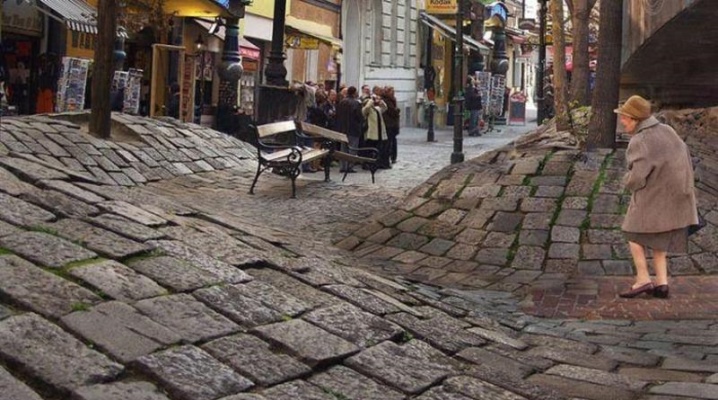
Paving slabs are very popular with consumers today. It is used in the construction and decoration of various territories. Therefore, when choosing this type of material, you need to know everything about paving slabs.

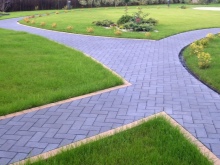
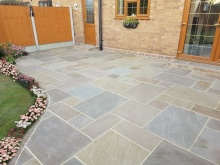
Specifications
The demand for tiles is determined by their high technical characteristics. Flat and solid piece materials made of concrete, rubber and polymer are most actively used today for paving sidewalks, courtyards, walkways, and various sites.
The main characteristics of the tiles:
- calmly withstands temperature jumps, and therefore it is used in different climatic regions;
- environmentally friendly, since in most cases it is made from natural materials;
- eliminates thermal deformation - it will not melt like asphalt, does not emit toxic substances when heated;
- lightweight, easy to install, it can be transported over the longest distances.
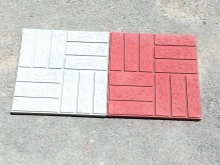
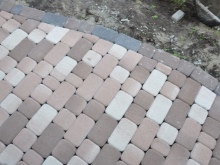
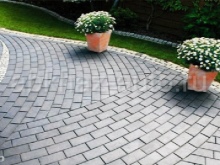
Today, tiles are made from concrete, granite, clay, rubber, and polymers. It can be of the most unusual shape. A large selection of tile sizes is another of its advantages.
Choosing a product is increasingly useful for summer residents and owners of country houses: using tiles, you can achieve different effects in landscape design.
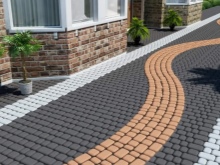
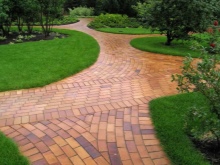
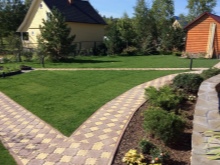
How are tiles made?
There are several manufacturing algorithms that depend on the types of tiles.
- Vibrated plate. The equipment required is simple - a concrete mixer, a set of molds and a vibrating table. A product is made from a concrete mixture with fine gravel, cement and sand, a plasticizer and a pigmented element, and water. Sometimes they add basalt or granite in chips, glass or fiber. Molds, already filled with the composition, are placed on a vibrating table, during the manufacturing process, the remaining air is removed, the composition is compacted. For 3-5 days, the product becomes durable, then it is removed from the molds and dried for 3 weeks. Such tiles are made even in artisanal conditions. It is suitable for paving courtyards, but it will not be the most durable and frost-resistant.
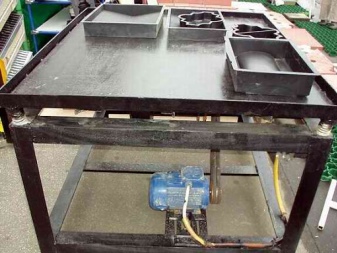
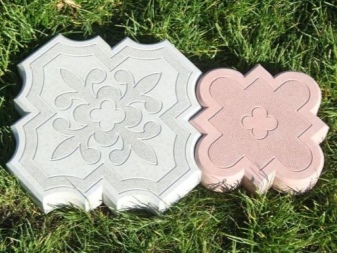
- Vibropressed. It is made exclusively in factories, with an obligatory pressing stage, without which it is impossible to achieve high density and strength from the material. Usually, such tiles are paved with the surfaces of parking lots at the entrances, that is, it is designed for high loads.
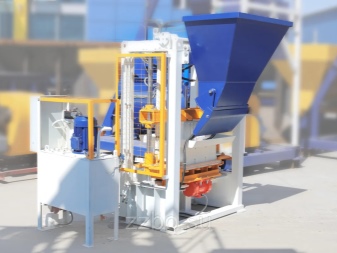
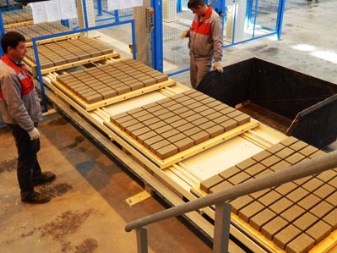
- Hyper-pressed. The method of semi-dry pressing is used. For the production of cement and marble limestone, pigments and minerals are added. The raw material is sent to the mold, and a press with a certain pressure acts on it. The tiles are then exposed to severe thermal stress. Then the products are sent to dry in special rooms, where the parameters of humidity and temperature are not knocked out of the set values. Such tiles are used not only in paving, but also in the arrangement of facades.

- Polymer sand. For the manufacture of such a tile, sand of fine fractions is used, and its proportions in the body of the product reach 75%, also polymer chips, dyes and additives for modifying the composition are included in the composition of this tile. The raw mixture is first heated significantly, the polymer component melts, it is mixed and formed under pressure. The result is a frost-resistant product, durable, with good wear characteristics.The tile does not absorb moisture, is not afraid of high loads. Lightweight and easy to install. Not afraid of exposure to chemicals.
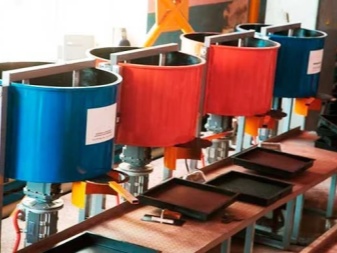
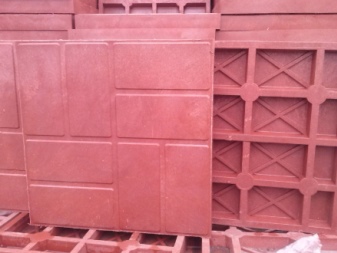
- Paving stones. The most expensive type of tile, as its performance characteristics are unique. For the manufacture of such a paving option, granite, marble, quartzite, travertine, sandstone are used. Sawing rocks on industrial machines. Paving stones can be sawn (parts of the rock are chipped off) and chipped-sawn (the edges of the product remain even).
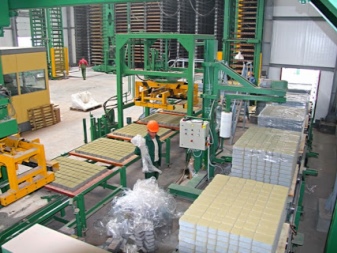
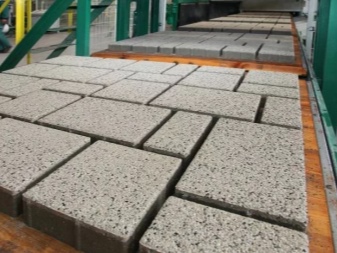
- Clinker room. They make it from baked clay (like a brick), and the people often call this tile, road clinker brick. The dry clay mixture is marked out, then diluted with water, this mass is subjected to pressure through special holes. This is how elongated rectangular blanks are obtained. The product is dried for several days, then it is sent to a tunnel kiln for firing for 2 days.
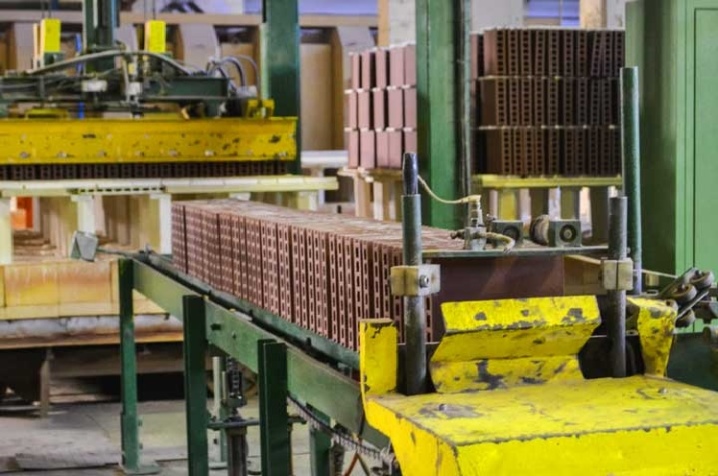
- Rubber. This tile is made from crumb rubber, which is obtained through the disposal of car tires, shoes and other polyurethane and rubber products. Pigments are also added there, changing the color of the finished product. This mass is also processed by high-temperature exposure, after which it is sent to blanks, which will determine the shape of the finished tile. Such material is usually used to cover children's and sports grounds, ramps for the disabled, stairs, etc. Such tiles have shock-absorbing properties, therefore they are not slippery, and it is difficult to get injured on them.
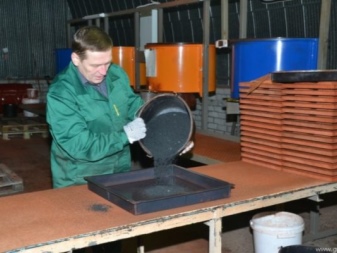
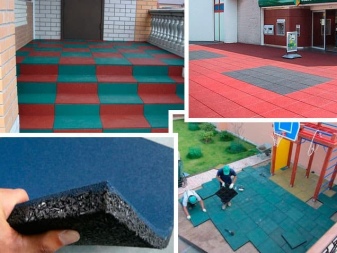
The variety of materials corresponds to the request, which is formed from aesthetic, practical and economic indicators.
Scope of application
The main function of the material is paving pedestrian as well as car pavements. First of all, sidewalks, as well as adjoining territories, parking lots, alleys, squares, zones near fountains are decorated with tiles. It is used in playgrounds and sports grounds, near outdoor pools.
The main competitors of paving slabs are rightly considered asphalt and concrete. They are more practical in many respects, for example, in terms of laying speed, but in terms of durability, some types of paving slabs are definitely more profitable. For example, paving stones. It has been used for decades, simpler types of tiles are also capable of serving 30-35 years without repair.
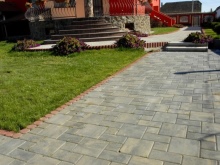

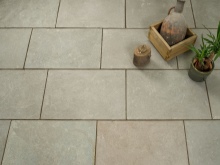
Tiles are also actively used due to their maintainability. Failed elements can be removed and replaced with new ones. That is, the repair costs are minimal. And if you need to lay communications under the tile, this is also done simply - the tile is disassembled, and after the completion of the work, it is re-installed. And from the point of view of attractiveness, paving slabs are much more aesthetically pleasing than concrete or asphalt. It solves the problems of the landscape, is used on large street squares, is laid out in a patterned manner near the house.
Features of the tile by purpose:
- the material for pedestrian zones will be the thinnest, the thickness is 20-40 mm, since the loads on these zones are minimal, greater thickness is not required;
- if paving requires a mixed-type coating, a thicker tile is needed, from 60 to 80 mm, the car will pass on such a tile, but this is still not a load of a real roadway;
- the paving stones are suitable for pavements with high loads, because their thickness can reach 120 mm, they are used on unloading platforms, in the territory of ports.
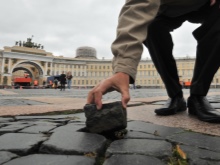

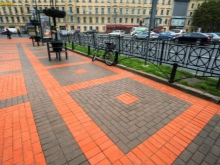
In suburban areas, paving slabs also allow you to solve more than one design problem: with its help, you can lay out walking paths, household trails, arrange an adjoining entrance area, etc.
Description of species
Varieties of tiles are an opportunity to choose the best option for every taste and budget.
Concrete
It includes cement (but sometimes lime), which water is used to liquefy. Crushed stone, sand or pebbles are used as fillers. To strengthen the material, add granite chips or use reinforced elements. The service life of such tiles reaches an average of 10 years.
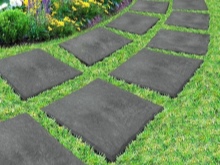
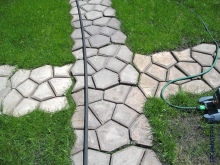
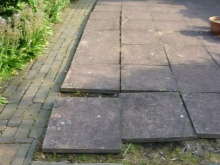
Granite
These are paving stones, paving slabs based on granite. Granite, as you know, is a natural stone, the nature of the formation of which is volcanic, consisting of two minerals.
The integrity of the stone ensures the durability of the tiles.
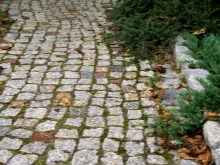
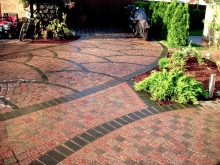

Clay
Or another name is clinker. It is fired according to the brick principle. It is imperative that the material contains clay with a high concentration of metals. During firing, these particles are sintered, and the product thereby becomes more durable. Clay tiles will last at least 15 years.
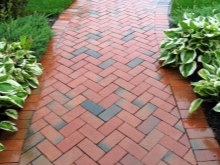
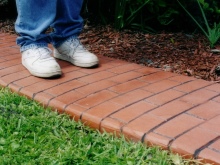
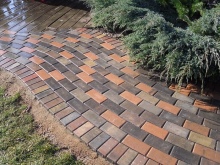
Rubber
There are no natural ingredients in this type of material. In addition to polyurethane components present polymer granules. It is a springy, highly elastic coating that will reduce injury in the event of a fall.
Such tiles are ideal for stadiums and playgrounds. It will last about 20 years.
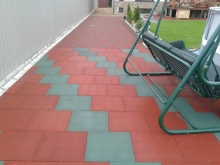

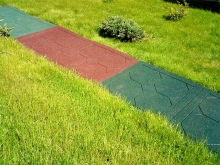
Polymer
The tile is made on the basis of polyethylene and plasticizers. It is they who serve as a binder, that is, they actually replace cement. And the main filler of polymer tiles is sand. It is a completely waterproof coating, chemically non-reactive, lightweight, capable of lasting 15 years.
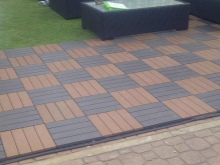
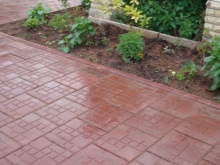
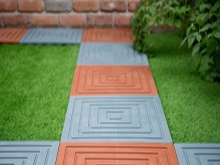
Shapes and design
There are a dozen or two common types of paving material. In addition to the usual rectangular, there are curly options, interesting round samples, hexagonal plates, etc.
The most interesting types of tiles in shape and design:
- "brick" - rectangular coating, it is permissible to lay in any order, joining the plates with each other;

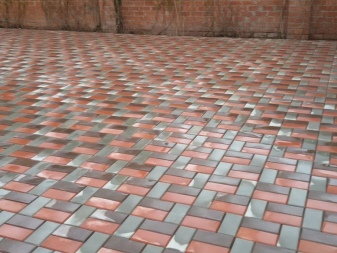
- "wave" - elongated samples with edges, the shape of the material is wavy, it can be of different colors - from gray to red;
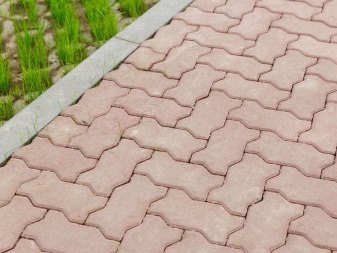

- "coil" - a self-explanatory name, because each element of such a sidewalk covering repeats the shape of a thread spool, the colors are also varied - yellow, white, black, brown;
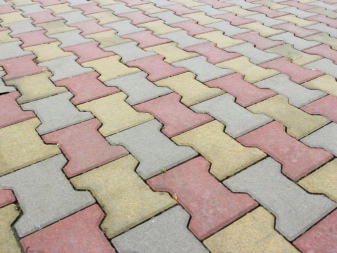
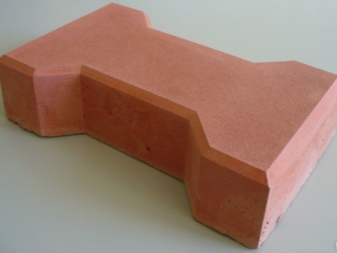
- "Honeycomb" - Another very popular option, the products have a hexagonal shape, reminiscent of a honeycomb;

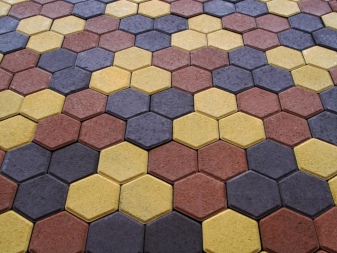
- "Gzhelka" - the complete set assumes two elements of complex shape, when a coating is formed around one of the elements, a pattern is formed with the help of four others (the second name is "gzhel");
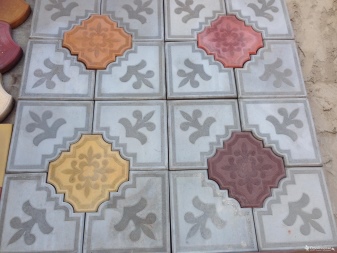
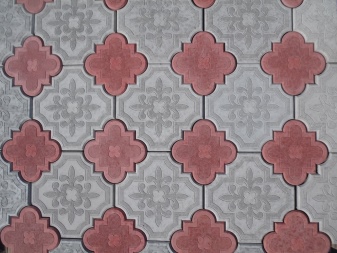
- "classic" - such a tile resembles a parquet board, it is made in square parts, on one product there are 4 segments that are perpendicular to each other and are divided into rectangular parts;

- "Clover" - complex elements of the same type can be interestingly combined in color;
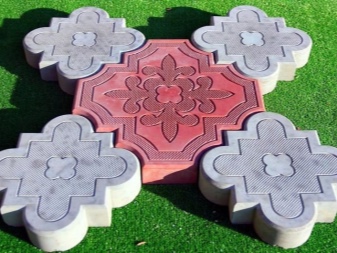

- "Scales" - a very sophisticated option that forms a beautiful scaly pattern;
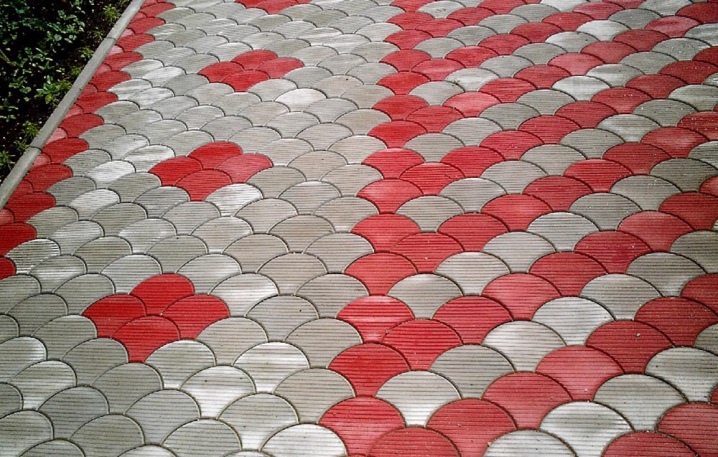
- "Old city" - the tile creates a pattern reminiscent of the old type of paving;
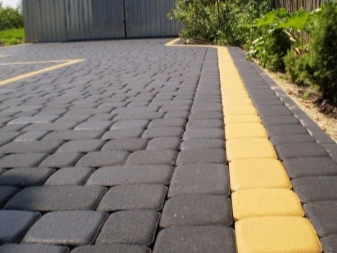
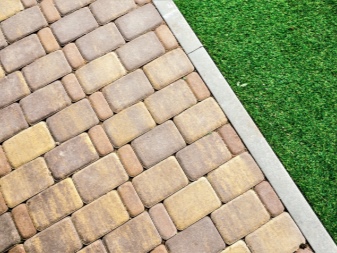
- "Maple Leaf" - in the color version, this styling is incomparable;
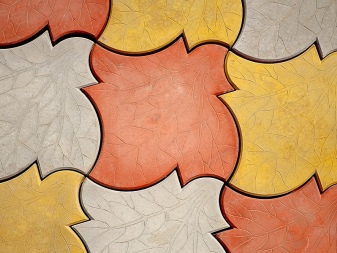
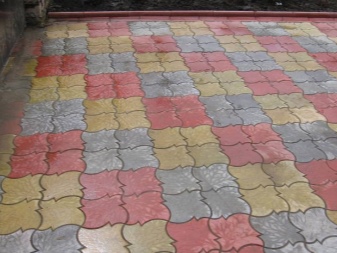
- "parquet" - material-imitation, which helps to decorate the territory with a curly layout;
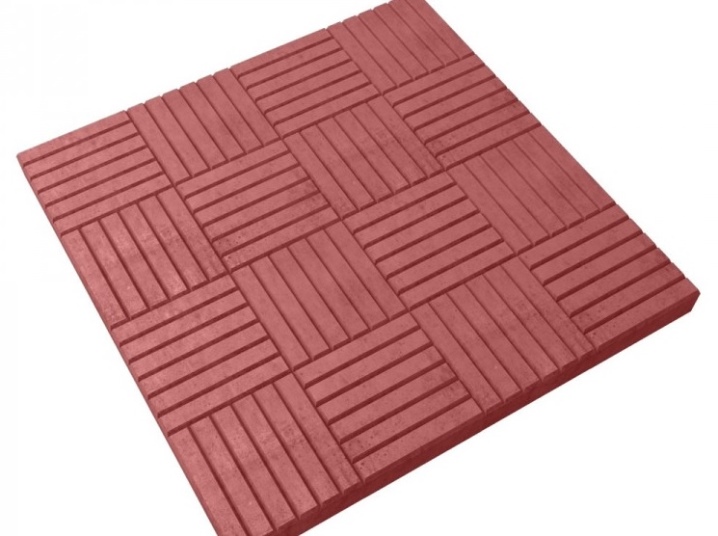
- "Cobweb" - made in the form of squares, which forms a pattern of a cobweb, a circular pattern is formed by 4 fragments folded together;
- "Antique" - trapezoidal material for an antique-style finish;

- "rhombus" - just a diamond-shaped option;
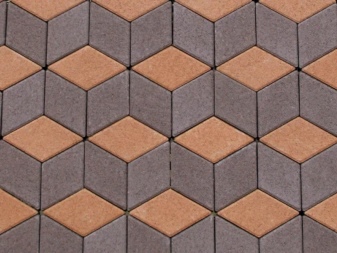
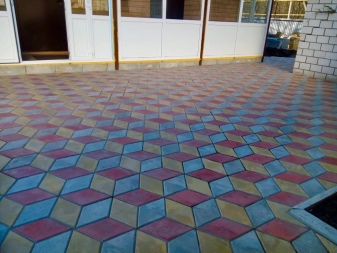
- "English cobblestone" - and this coating has a textured surface, which could be on the streets of the cities of the Middle Ages;
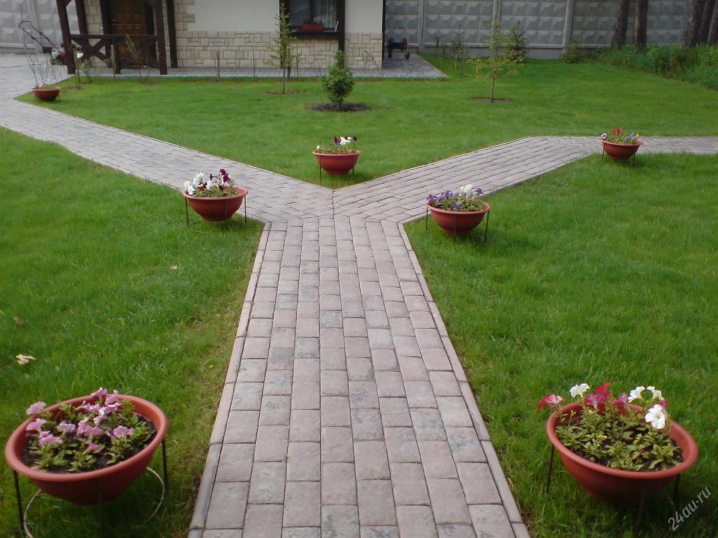
- "Lawn lattice" - an interesting type of tiles with holes for grass, very suitable for the preservation of the natural environment.
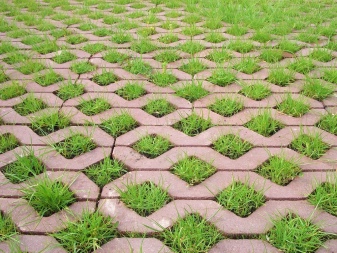
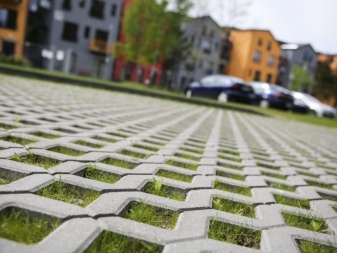
And these are not all possible types: "pebbles", "three boards", "chamomile", "12 bricks", "tree stump", "eco" - it is worth considering all the options in order to choose the one that will delight with its appearance every day ...
Dimensions (edit)
Knowing the length and width of the product is necessary to calculate the potential consumption. Its thickness is also an important characteristic that helps to understand what functionality the coating is designed for.
Standard size range (in mm):
- 1000x1000 - usually construction, decorative, colored tiles;
- 500x500x50 - very often the popular type "turtle" is sold under such dimensions;
- 300x300x50 - can be with or without reinforcement;
- 250x250x25 - often used at public transport stops;
- 350x350x50 - for paving large areas;
- 200x100x40 - for pedestrian courtyard areas, parking lots;
- 500x500x70 is a good option for garden paths.
When choosing the optimal size and thickness of the tile, you need to take into account the area of the upcoming coating, the method of laying, as well as the composition of the base with its characteristics. It is also important what size of gaps is preferred, what is the climatic context of the region, what is, finally, the purpose of the territory.
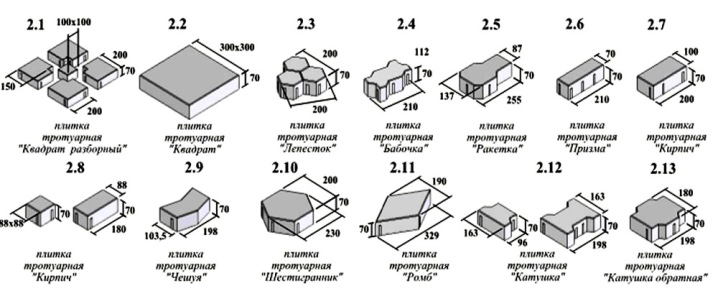
How many pieces are there in 1 m2?
For the calculation, you can use an online calculator, or you can simply browse the catalog, which indicates the number of a particular type of tile. For example, in one square meter of split tiles with dimensions of 100x100x100 mm - 82 pieces. And chipped tiles with dimensions 50x50x50 mm - 280 pieces.
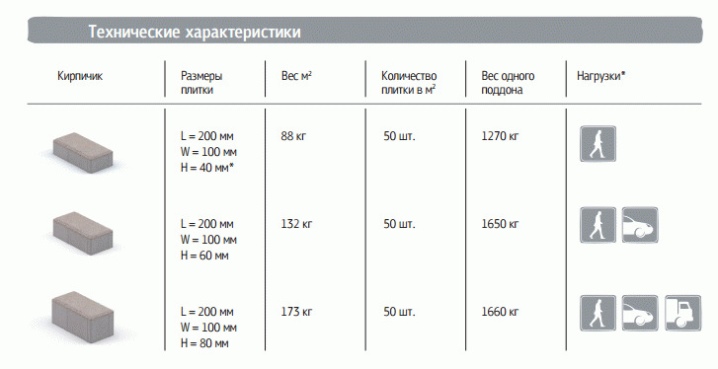
Top manufacturers
There can be a lot of brands on this list. Let's describe the most famous ones.
The top manufacturers include in terms of demand in the domestic market:
- Braer - works on the technology of double vibrocompression, the widest range of color shades, imitation of the texture features of natural materials;
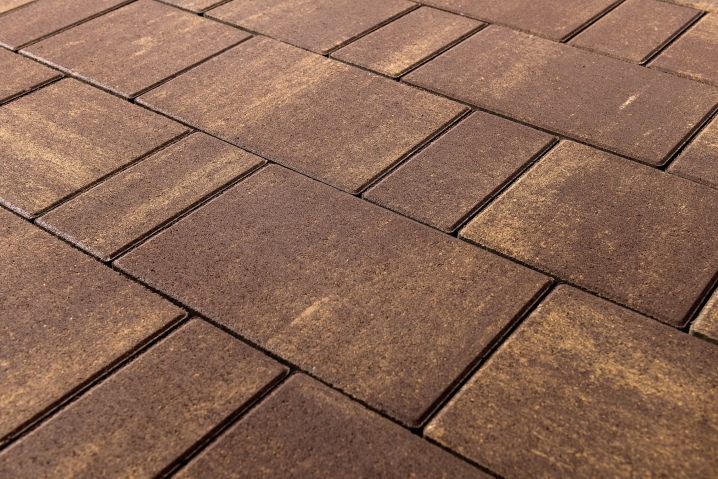
- "Gothic" - manufactures small-piece concrete paving stones and similar products intended for both horizontal and vertical paving;
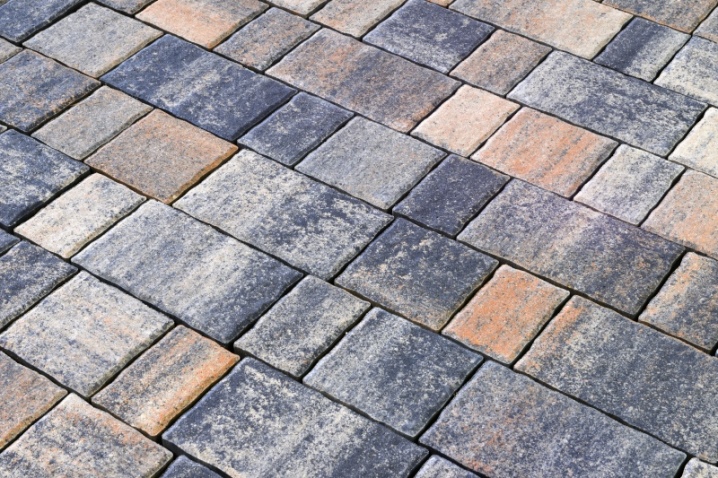
- LSR Group - a large Russian brand, the main product of which can be called paving clinker;
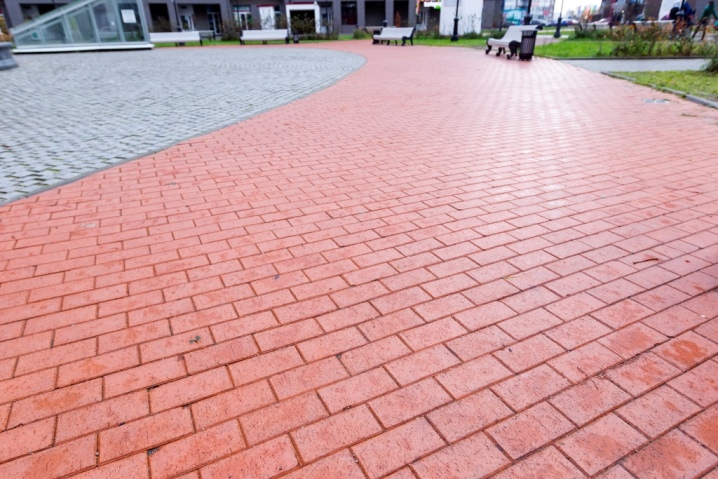
- "Choice" - Another well-known company that produces paving stones, works mainly on German equipment, colored tiles with a granite textured layer have gained particular popularity;
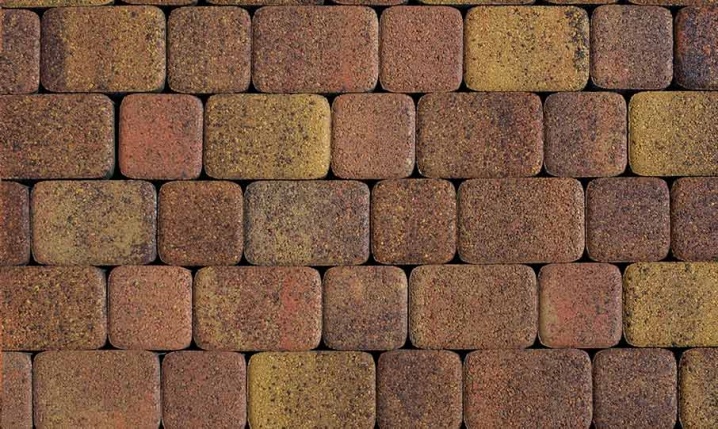
- "Stone Age" - a Ryazan enterprise operating on a German automated line produces, among other things, premium tiles.
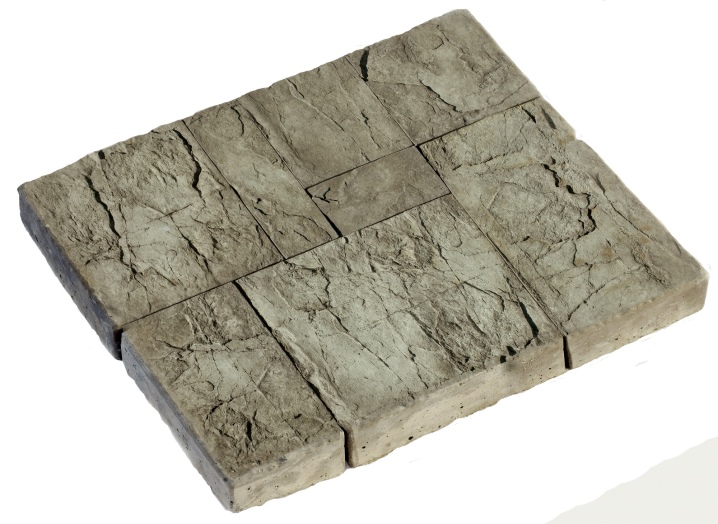
But the choice of material depends not only on brand awareness and price, it implies several components.
Criterias of choice
The main criterion is the purpose of the material. For example, if you intend to pave the surface of a sports facility or the same playground, it is better not to choose a soft rubber coating. For the restoration of the streets on which historical buildings are located, better quality tiles are needed, created from rock cuts - then the fusion of the horizontal surface with the buildings will be harmonious.
On a modern city street, they often choose the budget option, which is created in an urban style. And if you need to brighten the surface, use colored composite samples. If the load on the coating is expected to be very high, you should choose a coating based on natural stone, or vibropressed material. The same tile options, in the production of which high pressure was not used, are not so resistant to stress.
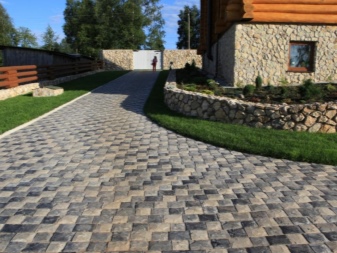
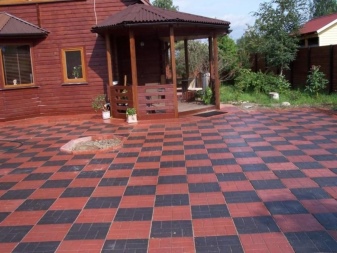
A quick guide to choosing a tile will tell you what to look for:
- product certification, as well as labeling;
- design that matches the style of the object;
- remoteness of delivery;
- moisture resistance and frost resistance;
- manufacturer's reputation;
- system of promotions and discounts;
- the relief of the coating (how slippery the tile is);
- price and its compliance with the estimate.
If you agree on your choice for each item, with almost one hundred percent probability it will be successful.
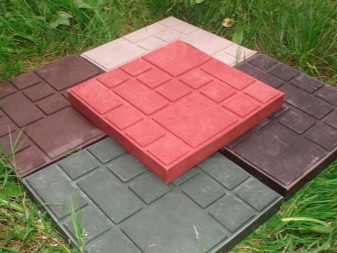

Styling
The drawing is the starting point for laying paving material. The color of the future coating, by the way, is also taken into account in the drawing. When purchasing a product, you need to add 10% for possible flaws in the styling. I must say that the preparatory stage, preceding the installation itself, is quite laborious.
First you need to remove the sod, remove stones, roots and weeds, then arrange drainage if necessary. Then the working surface is compacted, grooves are torn out for future curbs, a cushion of rubble is poured. The territory is spilled several times from the hose, it is defended for a day. At this time, by the way, you can tackle the curb. A day later, a sand layer is placed on the crushed stone, the sand is wetted, a mesh is laid on it.Then the mesh is poured with a mixture of sand and cement, leveled with a rake and a metal profile. Spills with water.
You need to lay out the tiles, not forgetting to use the building level. During laying, make sure that the boards are not lifted or pressed in, so that the base sags evenly under the weight of the tiles. You have to work in a mask and goggles so that construction dust does not get on the mucous membranes and in the respiratory tract.
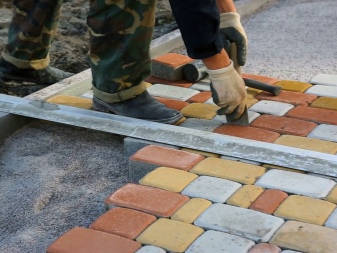
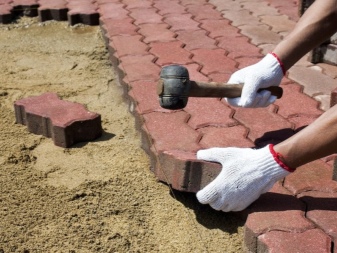
Advice
There are a few more points to pay attention to. These tips will help you avoid potential problems.
- Official permission is required to install the tiles, whether it is the area of the entrance or the entrance. You need to contact the local administration. Otherwise, it may turn out that the actions for the improvement of the territory are illegal and the tiles will have to be dismantled.
- It is necessary to think over the layout of the tiles in advance so that this is not chaotic arrangements, but an acceptable pattern is obtained.
- Be sure to use road curbs, then water from the road after rain or melting snow will not be on the site.
- When laying tiles on the territory of your home, you need to take care of a wide exit to the road - it's just convenient.
- At the entrance, by the way, the tiles can be replaced with road plates.
- Heavy construction waste does not have to be thrown away, it can become a base for a blind area.
- The tiles can be delivered and unloaded with a manipulator.
- When buying tiles, you need to take 1 pallet more than the calculations require.
- When laying, it makes sense to stock up on a film to cover the cement-sand mortar and the tile itself in case of rain.
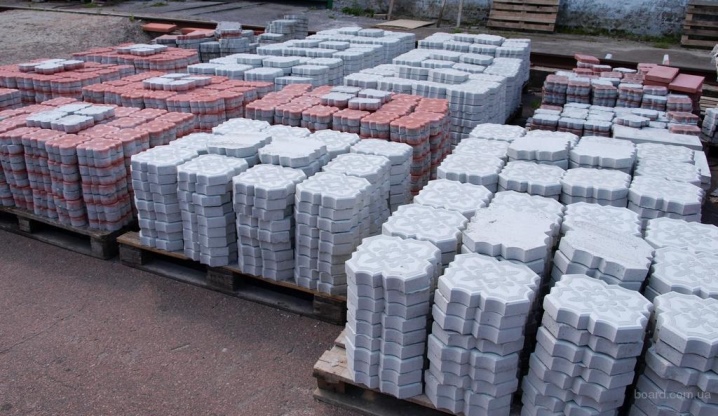
Tips are simple, but useful - sometimes you understand the obvious only after annoying mistakes in work.
Examples of use in landscape design
With eloquent examples, you can see how paving slabs change the visual experience of the site.
- A very interesting approach to the flower bed and the color fusion is visually pleasing.
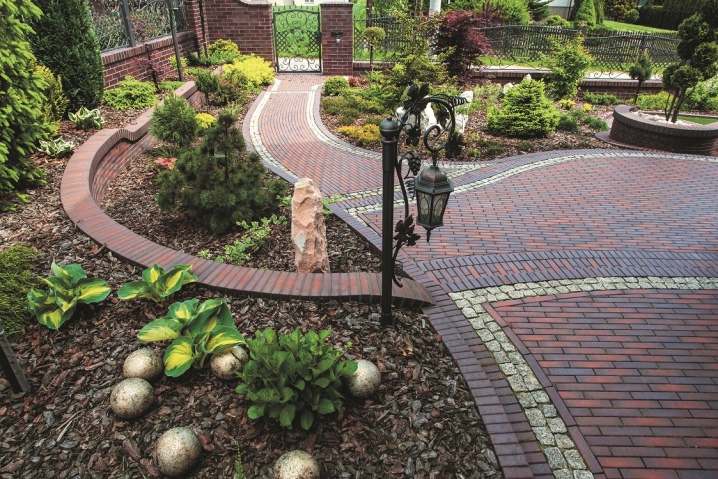
- The tile perfectly emphasizes the center of the garden composition - it is harmoniously laid out in a circle.
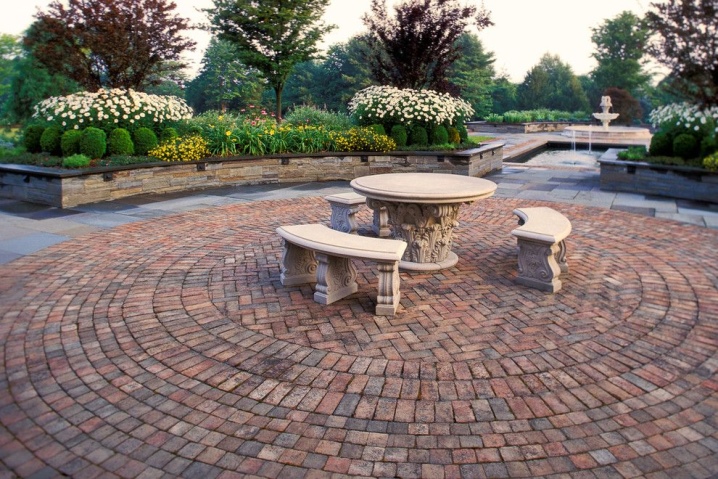
- Thanks to the colors and patterns of the tiles, the entire site is transformed.
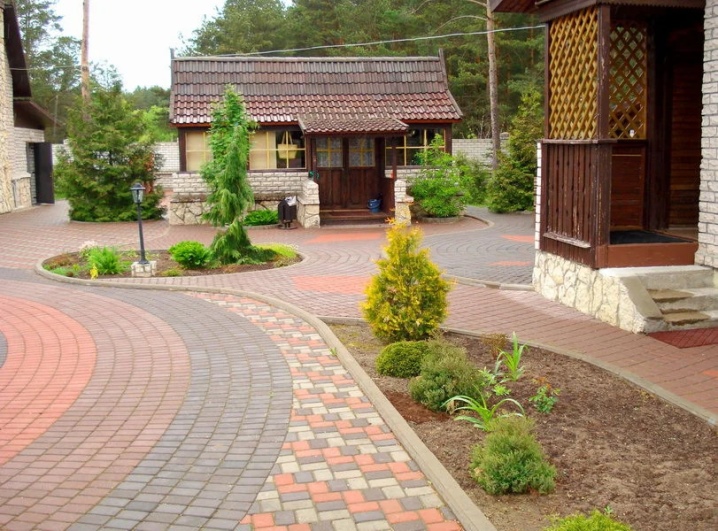
- It seems that this imitation of parquet is conducive to evening dances under the romantic light of the built-in lamps.
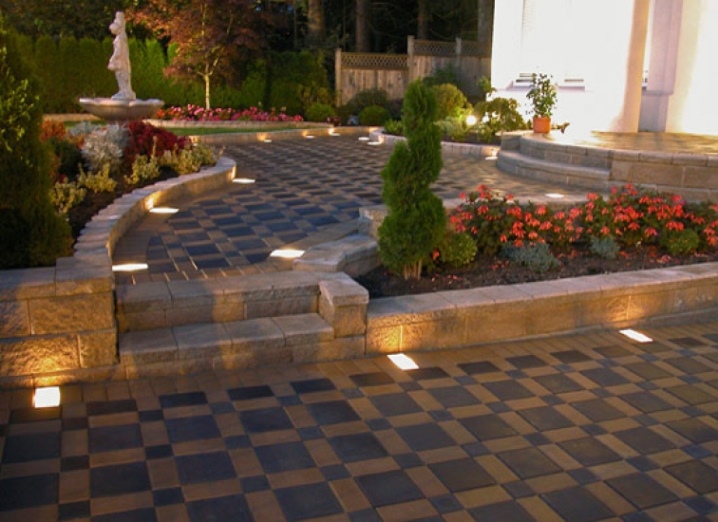
- The case when the tile and the selected palette of plants overlap with each other.

- Sometimes, with modest plantings, you can make a bright design by choosing a good tile and laying it out beautifully.
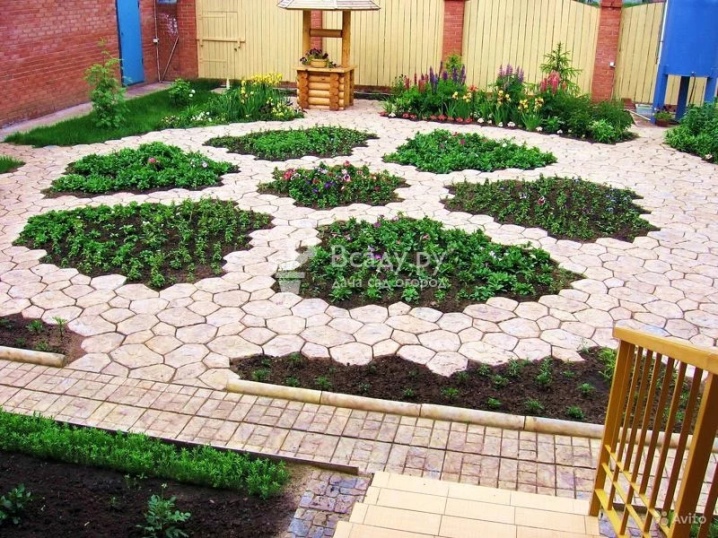
- This is a difficult option for laying, but if everything is calculated correctly, you can do without the involvement of specialists.
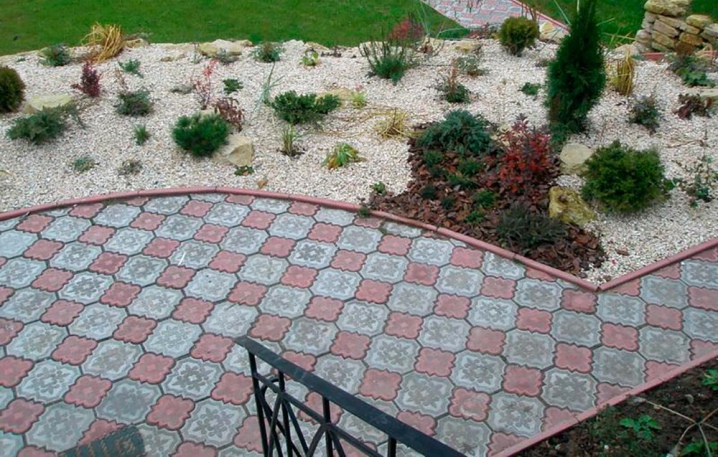













The comment was sent successfully.